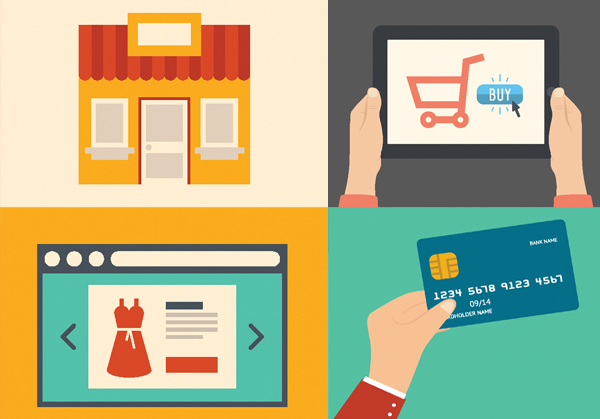Unlocking Omnichannel With a Single Data Stream

Omnichannel is a riddle wrapped in an enigma, enabling multiple payment methods and offers across devices and channels with one single view of the customer. Solving that riddle can only mean one thing: having a single data stream that follows that consumer. MPD CEO Karen Webster spoke with Forte CEO Jeff Thorness in an engaging digital discussion to learn how retailers are doing that and more using a single data stream as their solution.
When we talk about omnichannel, we don’t often talk about what happens “behind the curtain” – enabling the multiple payment types used and the ways in which omnichannel activities are integrated within the merchant environment. Forte CEO Jeff Thorness says that omnichannel is about more than just selling directly to consumers through multiple channels, but also about creating a single data stream that follows the consumer regardless of payments and channel preferences. In a digital discussion with MPD CEO Karen Webster, Thorness highlighted the ways in which Forte views omnichannel and what it’s doing to help retailers get ahead.
OMNICHANNEL’S COMMON DEMONIMATOR
Omnichannel is about more than just selling. Rather than a business channel trying to engage with the customers, omnichannel is about the opposite – allowing customers to engage with the business through various channels that consumers would like to engage with them through.
There is a big difference between going to a physical store versus browsing on the mobile device or tablet or PC. The common thread is that the retailer has to extend similar capabilities – the end result and the data has to be consistent. If a customer wants to compare products or research particular products, they can go to the store, but at the same time they need to have the ability to do this remotely on digital devices.
WHY DATA IS THE SECRET WEAPON
In order to successfully execute an omnichannel strategy, it’s all about synchronizing data that’s coming in through the channels, and delivering it back out through these channels. The messaging, the very guts of the delivery, needs to be consistent. If a customer is looking for inventory information, the information needs to be the same. If a customer needs support to look up a refund or exchange process, that data and those processes must work across all channels that retailers operate under.
WHICH DATA IS KEY?
Key data elements for omnichannel are inventory levels, purchasing/refund activity, and basic customer information like purchase activity.
Inventory and purchase data specifically will be critical for example handing a return across different channels. But in another use case, there may be someone going online to research a product and make a purchase, but then wants to have delivery be much quicker and pick up the item that day.
Being able to synchronize that data from an online experience to an in-store pick-up is a huge challenge for retailers that hasn’t been done in the past. Recently, Walmart announced offering scheduled pick-up times from online orders – these types of innovations rely heavily on these key data elements.
Consumers also are looking to be more engaged and informed about the status of their purchases. They may start off a transaction with a retailer through a fixed device like a PC, or in person, but then want to get real-time updates on it using their mobile devices.
THE CHALLENGE THAT RETAILERS FACE
When it comes to omnichannel, retailers don’t commonly have a single system that they use to drive all of the various channels that they serve. Most of the time, they’re using one solution for mobile, another for the web, and another for their retail environment.
So the key challenge, then, is how to consolidate all of the information captured through all of the channels and serve their customers, but also serve internal processes and customers. When retailers don’t use a single interface to handle fulfillment, evaluate marketing performance, restock store shelves, the end result is data silos and an omnichannel nightmare.
Bigger retailers can generally cope, even if painful since they have dedicated resources and the people to do it. The smaller retailers must be more reliant on their vendors to perform these functionalities.
OMNICHANNEL TOOLS AND SOLUTIONS
Forte’s Omnichannel Payment Processing Platform is one tool that small retailers can use to allow merchants to combine all transactions and data into a single platform.
Forte’s Omnichannel Checkout solution is a tool that can be used by retailers in a variety channels – ecommerce, kiosks, card-present environments, and more. Retailers can provide critical data for the customers through the payments gateway platform and share it across entire enterprise.
In a live demo during the digital discussion, Thorness pointed out that using the Forte Checkout Solution, merchants can also assign a customer ID during a particular transaction when a customer first buys something. If that customer later goes to buy something else via the online store, they would be recognized, even if the customer uses a different method of payment. That customer information can be tokenized, and that can be passed along when the customer returns.
THE MAIN TAKEAWAY
The reality is that consumers have expectations as far as how businesses need to operate today. Currently, there’s a tremendous gap between what most retailers can perform versus the customers’ expectations: an omnichannel strategy, providing real-time information on any aspect of the retailer-customer relationship. According to Thorness, this need will only get stronger, so companies need to find a partner that has experience, understands the challenges, and can alleviate the pain points. Consolidating data under a single stream is essential.
Watch the full digital discussion and Forte demo here.
